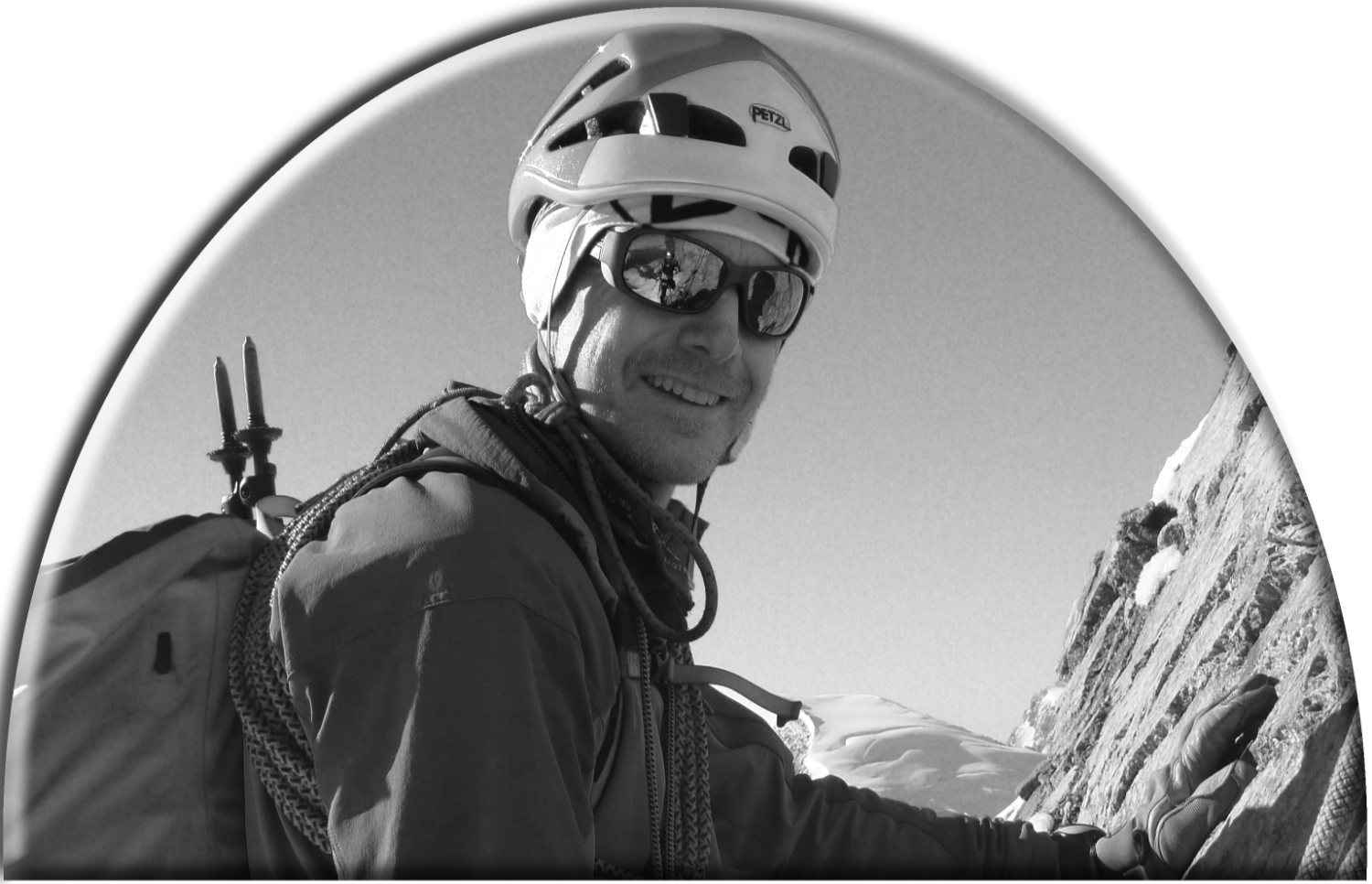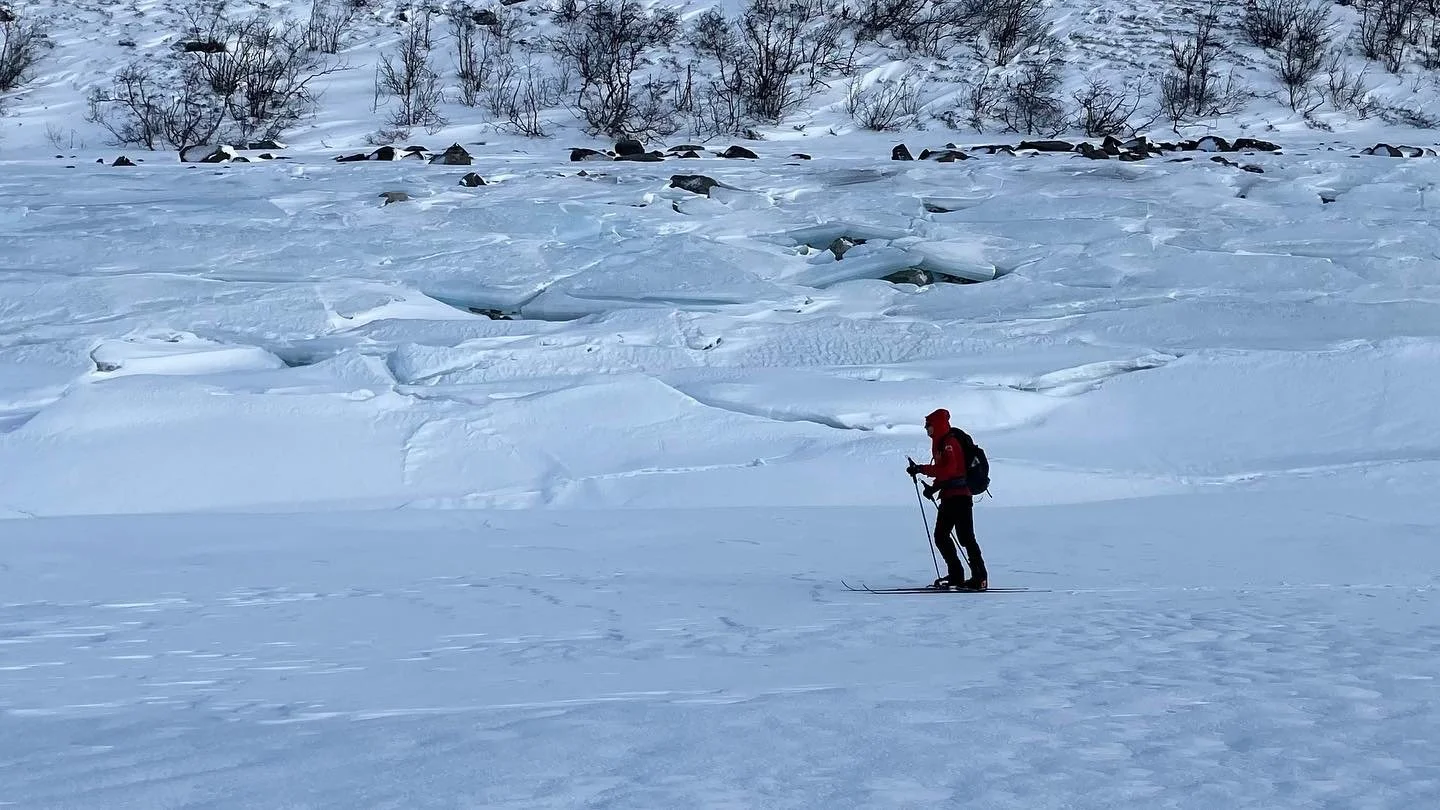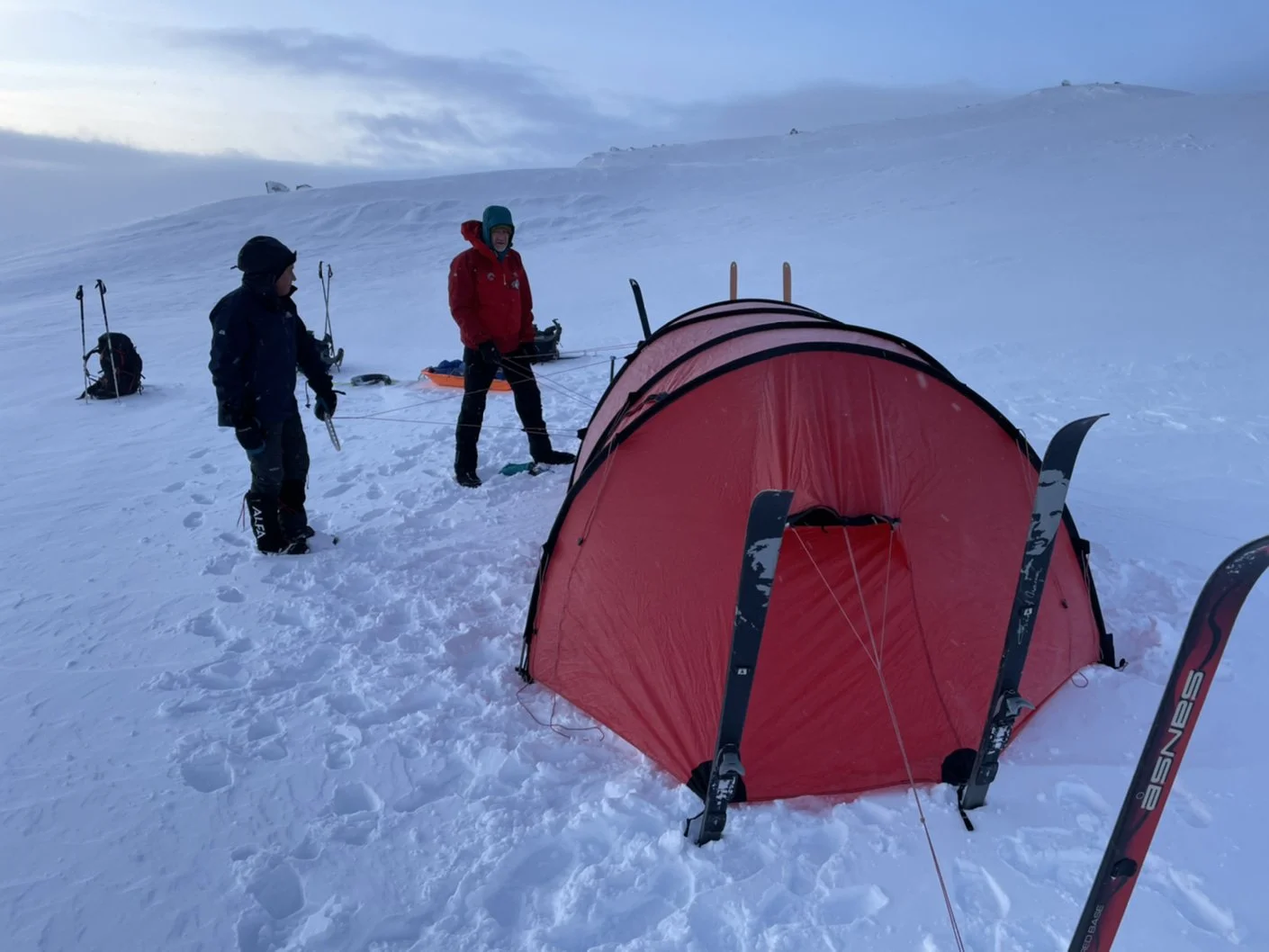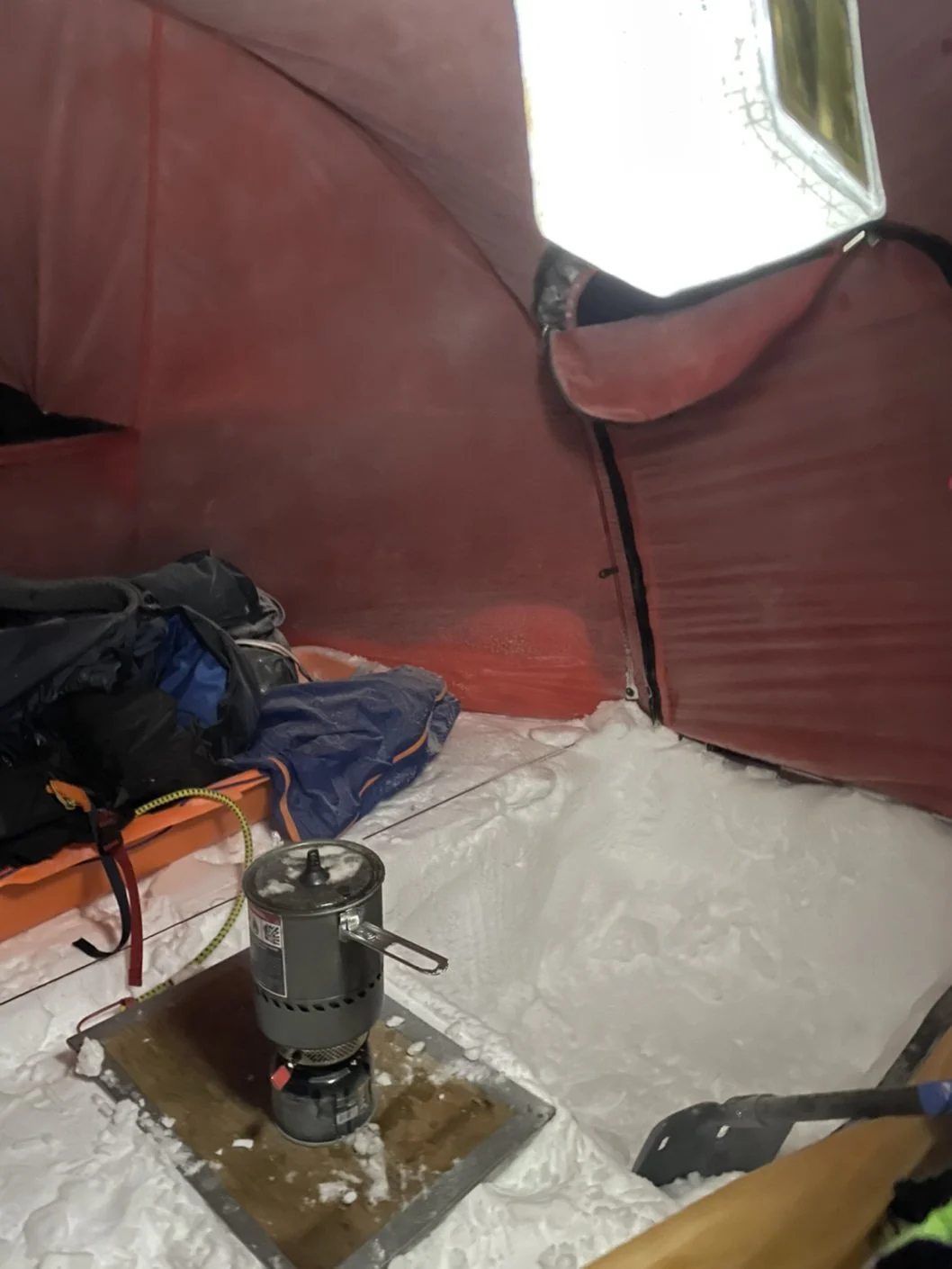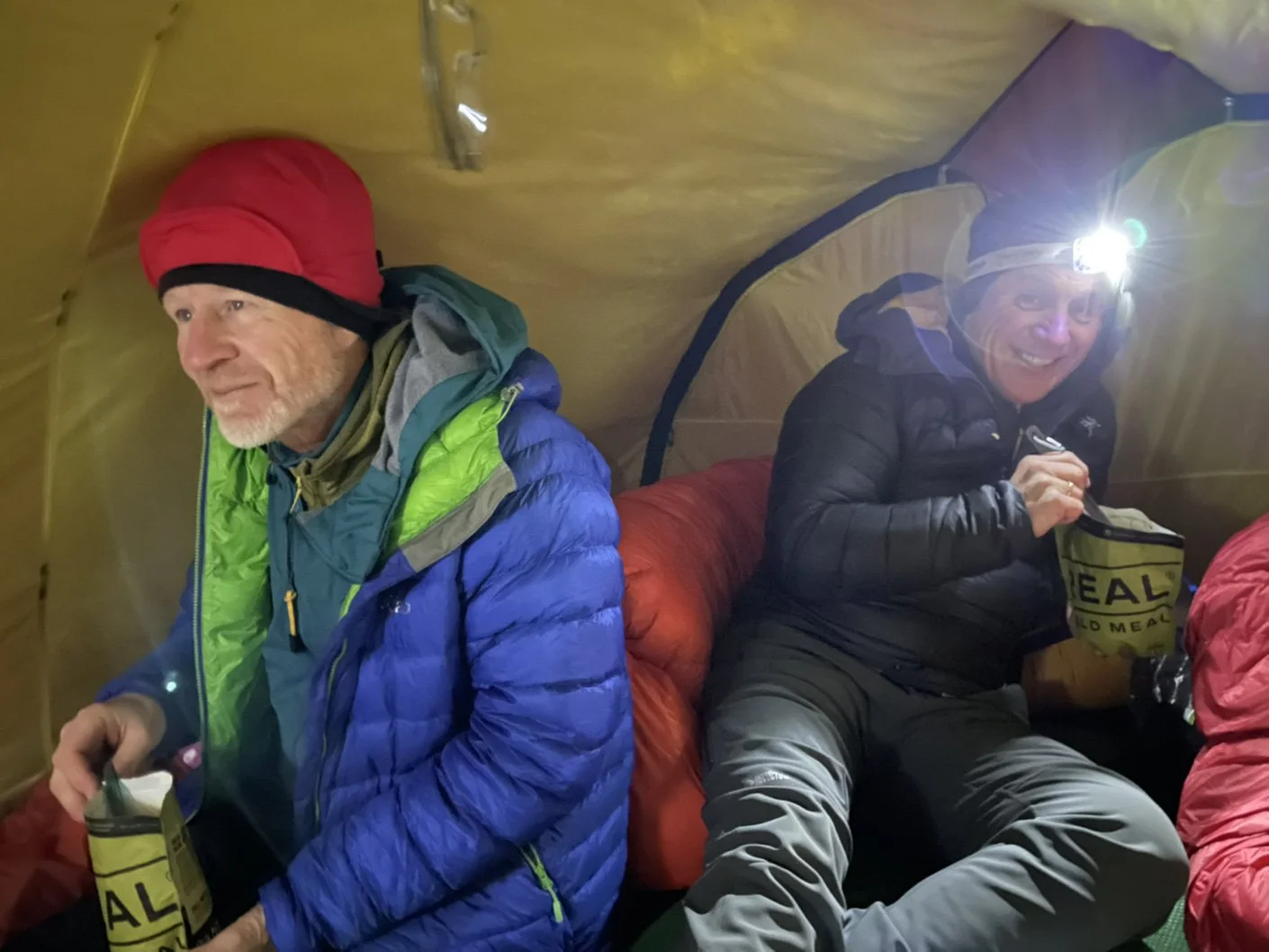Trial run - Part 1
It’s been almost a week since my last blog. I’ve posted some photos on Instagram, which you can access by clicking on the icon of the same name, but there are only so many times I think you would tolerate me publishing a blog that says, “Went skiing and it was windy” before you hit the “Unsubscribe” button. So I thought I would wait until I had something interesting to report and here it is.
It’s a bit of a long story that takes place over 2 days, so I have split it into 2 parts. I will publish part 2 tomorrow. But first a précis of the last few days up to Monday 31st January.
Went skiing and it was windy (step away from that unsubscribe button!), but that really is it. Conditions here have been less than perfect, high winds (including one day with winds exceeding 120 kmph! - Unsurprisingly we didn’t go out that day) and very little fresh snow, so very icy. Despite this we have been going out and skiing up to 30 km a day (7 hrs). My knee and ankle have held up well and my skiing and confidence are both improving. In short, these days of training have been invaluable.
We ski everywhere. We have no car…
Skiing along the frozen lake en route to buy groceries - Eat your heart out Waitrose, Twyford
Anyway, these days of training all culminated shortly after sunrise on Monday morning the 31st January when David, Trond and I set off from the cabin carrying everything our new team of 3 would use should the journey north continue. Lighter rucksacks and a pulk (sledge) filled with additional gear including tent, food, fuel, etc.
This was to be the big test. Would we all feel confident enough by the end of these 2 days that the journey north has any chance of success?
We left the cabin at 08.30 ish. Trond with the pulk in tow. I have no idea how he controls it. Actually, that’s not strictly true. I can see how he controls it, I just can’t understand how he does it while remaining upright.
Day 1, the sun is shining and Trond gets the feeling he’s being followed
It’s not too cold. -7, and not windy. Yet.
We skied on the prepared trails to the top of the holiday cabins above Ustaoset then skied deliberately about 5 metres off the trail in the untouched snow to give us an idea how we would get on in the wilderness After a couple of hours we turned away from the prepared trails and headed west in the direction of a small holiday village accessible only by foot or rail called Finse.
The snow varies from solid ice to powder, to snow you break through just as you put your full weight on it to softer snow beneath. This means that the person in front, breaking trail, has to work pretty hard.
Heading off into the sunset. So it must be about 2.30pm
7 hours and 25 km later at about 3.30pm, Trond, using his new Garmin GPS, expertly guides us to a depression on the map that had previously been identified as sheltered, to find that it wasn’t. Sheltered that is. A howling wind batters us as we put up the tent. Some would say it is good practice. Others would say, “Enough with the wind already!”
Trond and David admire their tent erecting skills
We are all quite experienced at the whole camping thing, even in snowy environments. Still it’s quite a task getting into a tent in the snow. We use our skis to hold the main guys and large snow pegs to anchor the others. One of us then goes round burying the edge of the tent with snow to stop wind blowing snow under the fly-sheet while inside the other two are getting things sorted out.
The tent has an inner and an outer, or ‘fly-sheet.’ The tent sleeps 4, allegedly. Though I can’t imagine it would be too comfortable. It is however perfect for the 3 of us. The fly-sheet is much larger than the inner, meaning there is a large vestibule at both front and back (the back one we don’t use). Half of the front vestibule is taken up with the pulk and our now mostly empty rucksacks. Between that and the door of the tent a large, square hole is dug. This serves two purposes. You can use it to sit in to take off and put on your boots, so no snow gets in the tent. The hole also continues to get excavated to provide snow to melt for water on the stove that sits on a board next to the hole. A second, smaller hole is dug at the other end of the vestibule to empty pee bottles. Don’t go confusing those holes now.
In the vestibule. You can see the excavated snow hole to the right of the stove and the pulk and rucksacks at the back
After getting the stove going to melt snow the first thing to do is to get roll mats out to sleep and sit on. Pile on warm clothes (it’s around 0 degrees c inside) and eat any food we can get our hands on. Other sleeping stuff is piled out of the way for later. Then it is time for a hot drink from the first round of snow melting. More hot water is needed for our dehydrated meals and more still to fill water bottles for the next day skiing, plus water for breakfast drinks etc. That’s around 8-10 litres. That’s a lot of melting snow which means that one of us is constantly melting snow from the moment the tent is up to the moment we go to bed.
Dinner time!
Once all this is over it’s time for bed. Blow up thermarests (added insulation), shove damp things into the bottom of sleeping bags then, nighty night, its time to sleep. 7pm. What else you gonna do? Alarms set for 6am.
I couldn’t sleep for a little while. I thought it was the noise of the tent flapping about in the very high wind and even considered ear plugs, until that is I discovered the ones I had were wax and had frozen solid. So much for that idea. I finally realised I had too many clothes on and was too hot. That sorted I soon fell fast asleep.
That’s the end of day 1 and part 1 of our little test trip. Tune in tomorrow to see if the tent survives the night, if any of us had to get up to ‘pay a visit’, if we make it to Finse and most importantly to find out if we passed our own test.
